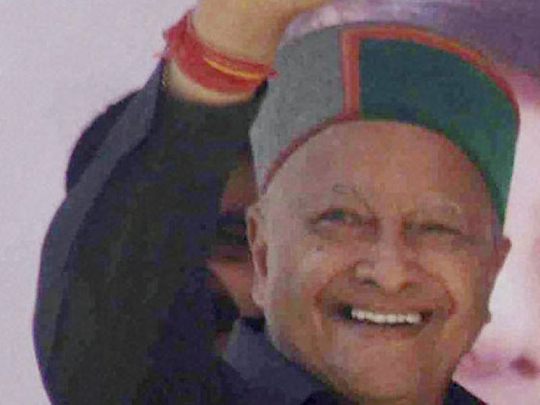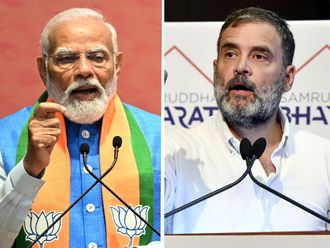
Shimla: One is never too old to learn. Himachal Pradesh Chief Minister Virbhadra Singh, 80, is taking lessons on how to use a desktop touch-screen computer as the state assembly seeks to be the first in the country to go paperless.
Virbhadra Singh, who hasn’t operated his personal email himself or worked out how to use a mobile phone, last week got tips on how to use a computer by scrolling the digital pages while replying to a question in the state assembly.
The monsoon session of the legislative assembly, slated for next month, will go paperless with the commissioning of the Rs8.12 crore (Dh4.97 million) e-Vidhan Sabha project of the union ministry of communications and information technology.
“The time has come when we all need to adopt and learn digital technology to keep abreast with the fast-changing trends,” Virbhadra Singh said.
The chief minister, who will officially inaugurate the project on August 4, the birth anniversary of the state’s first chief minister, Y.S. Parmar, for the first time tried his hand on Friday on a touch-screen computer installed in the assembly.
Official sources said the chief minister might be put through one or two more training sessions to familiarise himself with the newly installed device.
Speaker B.B.L. Butail, also an octogenarian, said the state assembly will be the first in the country to go paperless, which would improve its carbon rating.
“From sending questions online and receiving replies in an e-format, we are going to do away with the entire hard copy format,” Butail told IANS.
Also enabled will be e-voting and digital recording of House proceedings.
The questions and the replies will be uploaded on the digital touch-screens of the legislators half an hour before the session commences to enable them to prepare for discussions in the House, the speaker said.
Another octogenarian assembly member who participated in the e-classroom was former BJP education minister I.D. Dhiman.
Dhiman, who retired as a government teacher, showed keen interest in becoming tech-savvy, said an official associated with training the legislators. “Dhiman came here three or four times. Now he is operating the computers without the assistance of a technical team,” said the official.
Energetic 85-year-old Irrigation and Public Health Minister Vidya Stokes is yet to set her fingers on the super-tech gadgets.
“I will soon visit the Vidhan Sabha to get tips to operate my desktop,” Stokes, a long-time administrator of women’s hockey, told IANS.
Butail said that most members of the 68-member House have taken special training in groups to familiarise themselves with the newly installed devices.
He said the communication between the government functionaries and the ministers would also be online, besides video conferencing, digital video recording and web streaming.
Butail said if any member of the House wants to highlight any problem of his/her area through video clips via a call attention motion, this could be displayed on an LED screen.
The elegant Vidhan Sabha building, earlier called the Council Chamber, was opened by the then British viceroy, Lord Reading on August 27, 1925. The Central Legislative Assembly used to hold its summer sessions here during the days of the Raj.
Leaders like Motilal Nehru, Madan Mohan Malviya, Lala Lajpat Rai and Satya Murthy, along with Mohammad Ali Jinnah, were members of the Central Legislative Assembly.
After Independence, the Council Chamber housed the Punjab legislative assembly, the state secretariat, the All India Radio station — and thereafter, the Himachal legislative assembly. The Punjab assembly had moved out after Himachal Pradesh became a full-fledged state in the mid-1960s.












